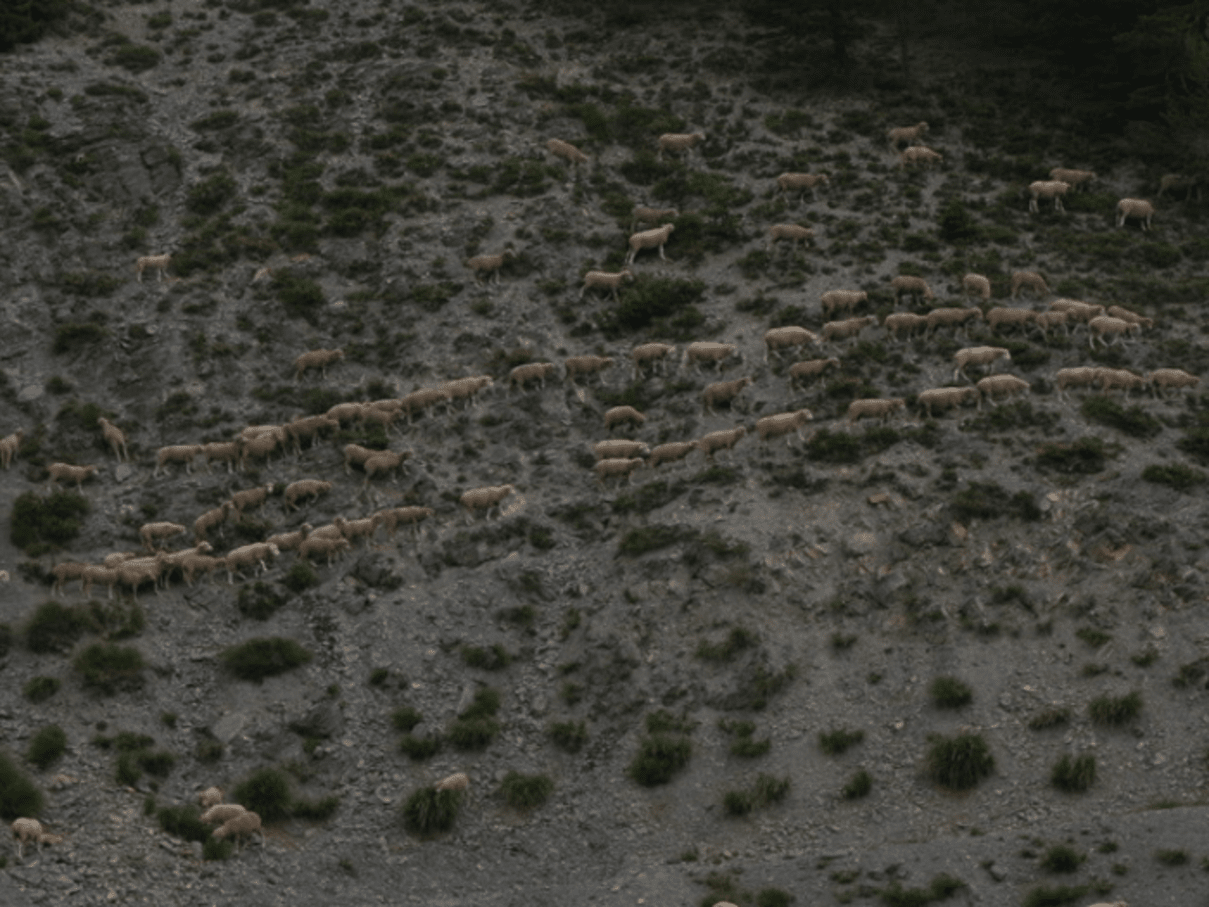Sheep are more democratic than you think
Sheep are more democratic than you think
Collective motion brings to mind fascinating images, such as the flocks of birds over a corn field, or schools of barracudas as they move in circles in the water. These motions are also particularly appealing to physicists, as the patterns that emerge lend themselves to mathematical and statistical modeling that can help them better understand this phenomenon. When it comes to sheep, many studies describe the collective behavior in sheep flocks as a self-organized process where individuals continuously adapt their direction and speed to follow the motion and collective decisions of the group – as if the only leading force were the “collective brain” itself. This view, however, does not take into account that animals do not move continuously, or the possible hierarchies existing in many animal groups and the potential benefits of having a single individual lead the way.
Together with other researchers from the Université Côte d’Azur, Université de Toulouse, and CY Cergy Paris Université, Luis Gómez-Nava (https://www.scienceofintelligence.de/people/luis-gomez-nava/) of Cluster of Excellence Science of Intelligence (Berlin) used physics to examine the intermittent collective movements of small groups of sheep. In the study, which was published on Nature Physics (https://www.nature.com/articles/s41567-022-01769-8), the scientists found that the flock’s collective motion occurs in an intermittent and democratic way, thus benefiting from a sort of alternation of hierarchy and democracy, in which individuals effectively take turns in being group leaders.
How does this take place?
According to Gómez-Nava and collaborators, when the sheep stop to feed or rest between one collective motion phase and the next, they randomly pick a new group leader for the next round of flocking, thus transferring control to a new individual each time. In this way, individuals take turns being leaders and the flock’s collective intelligence is achieved democratically, over many collective motion phases.
To study collective motion, researchers commonly use what is known as the Vicsek model, which helps describe the remarkable self-organization of large unstructured bird flocks, such as groups of starlings, with the main difference however that these types of motions seem to occur without an apparent leader. In this model, all individuals behave identically, advancing at constant speed while aligning their direction of motion to local neighbors. In the present case of the sheep, however, social interaction rules within the group vary as hierarchical mechanisms come into place. Therefore, instead of aligning their direction of motion to their local neighbors around them, all individuals except the leader tend to move towards the individual that’s immediately in front of them, effectively bringing the flock to move forward in the direction chosen by the leader.
The non-uniform internal interactions between sheep mean that the Vicsek model cannot be applied to the present case. Therefore, the scientists had to adapt the model differently in order to gain insights about these relationships. Through computational simulations, they found that the group might profit from both hierarchical and democratic mechanisms, despite the apparent incompatibility between these two concepts.. “In other words, the group can benefit from the line formation to navigate complex environments – like a maze – in an optimal way if the group leader has information about the location of the exit. In a way, thanks to the strong hierarchical structure of the file, the group takes advantage of the leader’s private information during one collective motion phase”, said Gómez-Nava. “However, there is also a democratic process resulting from the change of leaders from one motion phase to the next, which provides new benefits to the group, though this occurs over a longer time scale.”
“If the group is in a situation where there are multiple sources of nutrients in different locations, and the individuals of the group have partial information about their location (e.g.: sheep A knows the location of nutrient A, sheep B knows the location of nutrient B and so on…), then the “leader-swapping” process provides the group with the possibility to visit all locations in an optimal way,” said Gómez-Nava.
Currently, the researchers are working on exploring the limitations of such findings, as well as the possibility to extend these results to larger groups and to other animal species that also move in files. Experiments and studies like this one bring us a step closer to the understanding and benefits of collective motion in animal groups.
Photo taken in the Pyrenees by G. Theraulaz, researcher at the Centre de Recherches sur la Cognition Animale [CRCA] of the University of Toulouse.
PAPER: https://www.cell.com/current-biology/fulltext/S0960-9822(21)01654-7





